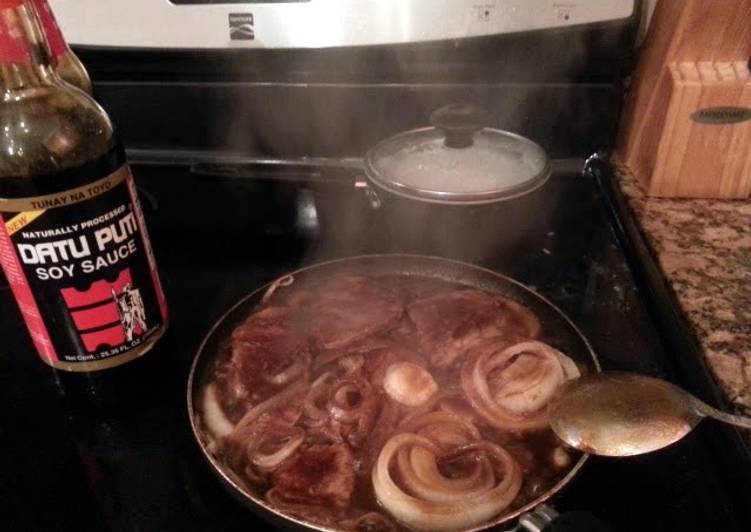Louise's (Bistek Tagalog) Beef Steak. Bistek Tagalog is a type of Filipino beef stew. This is also known as Beefsteak to some people. It is comprised of thin slices of beef and a generous amount of onions.
 This video will show you how to cook Bistek Tagalog (Filipino Beefsteak).
Marinate beef in soy sauce, lemon and pepper for at least one hour.
Slow Cooked Beefsteak (Bistek Tagalog) - Panlasang Pinoy. · Bistek or Bistek Tagalog is a Filipino version of beef steak marinated in soy sauce and kalamansi juice.
You can have Louise's (Bistek Tagalog) Beef Steak using 8 ingredients and 5 steps. Here is how you cook it.
This video will show you how to cook Bistek Tagalog (Filipino Beefsteak).
Marinate beef in soy sauce, lemon and pepper for at least one hour.
Slow Cooked Beefsteak (Bistek Tagalog) - Panlasang Pinoy. · Bistek or Bistek Tagalog is a Filipino version of beef steak marinated in soy sauce and kalamansi juice.
You can have Louise's (Bistek Tagalog) Beef Steak using 8 ingredients and 5 steps. Here is how you cook it.
Ingredients of Louise's (Bistek Tagalog) Beef Steak
- You need of Louise's Filipino style beef steak.
- Prepare 1 kg of flat beef steak (any thin-sliced steak would do).
- Prepare 2 clove of garlic.
- It's 1/2 cup of soy sauce.
- Prepare 1 medium of white onion.
- It's 1 pinch of pepper.
- It's 1 of small lemon or calamansi.
- Prepare 2 tbsp of oyster sauce.
Try this savory and flavor-rich dish now. Bistek Tagalog is the Filipino version of the Beefsteak. It is comprised of thinly sliced beef cooked in soy sauce and lemon juice and garnished with caramelized onion rings. Bistek Tagalog is one of the simplest, yet most appetizing dishes of Tagalog region, in the Southern Luzon, Philippines, where "bistek" is believed to have originated.
Louise's (Bistek Tagalog) Beef Steak step by step
- Put oil in a cooking pan, set in medium heat..
- Add garlic(minced) and onions(slice thinly into rings). sautee for about 1 minute.
- Add your beef,oister sauce, pepper, soy sauce and lemon.
- Let it simmer for 10 min or until beef is fully cooked..
- Viola! serve over a cup of rice.
The Bistek Tagalog Recipe is a local version of western beef steak. It comes from Spanish word "bistec", it is a type of Filipino dish. Bistek Tagalog is a traditional meat dish originating from the Philippines. It consists of thinly sliced beef that's marinated and braised in a combination of citrus juice (usually from lemon, lime, or calamansi fruit), onions, garlic, soy sauce, and pepper. It is believed that the dish was derived after the Spanish.